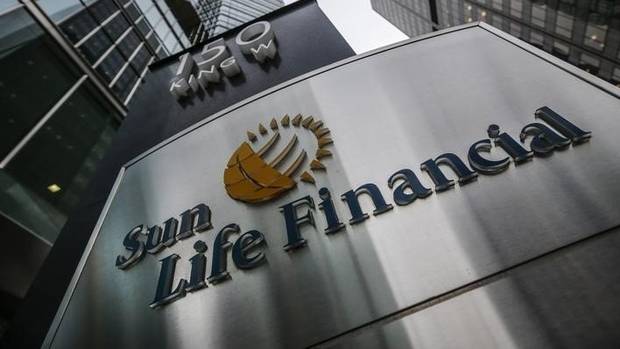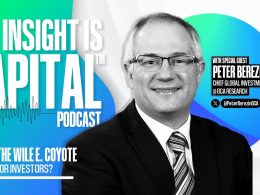by Jurrien Timmer, Director of Global Macro, Fidelity Management and Research
Happy birthday, Mr. Bull.
October is a busy month for celebrating milestones, with my son turning 26 on the 3rd and my daughter turning 29 on the 10th. And this on the heels of my parents’ 70th anniversary on October 4th. October is also a birthday month for this equity bull market. Tomorrow marks the day that the current cyclical bull market was born three years ago. Through last Friday the bull has produced a garden variety 90% gain, exactly in line with the median gain over the past century. But of course, we all know that there is nothing typical about this cycle.

Usually, bull markets start broad and end narrow, but this one started narrow, and while it has broadened somewhat in absolute terms it remains narrow in relative terms. Typical bull markets start with a low P/E and end with a high P/E, but this one started expensive and has become even more so. The fist year of a bull market typically begins with P/E expansion as price discounts an earnings recovery, and then in year 2 the baton gets passed to earnings growth as valuations compress. Not this one. While earnings have grown double digits in 2024 and 2025, valuations continue to amplify returns.

Bull markets often follow recessions and get underway as the Fed is cutting rates to stabilize the economy. Not this one. The current cycle followed a bear market driven entirely by a sharp rise in the cost of capital and without any contraction in earnings.
History rhymes
The same thing happened three decades ago when then-Fed Chair Alan Greenspan raised rates by 300 bps in 1994, producing at that time the biggest bond bear market in history. He landed the plane successfully, gave the markets back a few of his rate hikes, and unleashed one of the most powerful bull markets in history, driven by the internet boom that later turned into a tech bubble. When Greenspan stopped raising rates in late 1994, the 5-year CAPE ratio was14.7x. Six years later it peaked at 31.1x.

Current Fed Chair Jay Powell has also landed the plane after raising rates 525 bps in 2022 and producing one of the worst bond bear markets in history. Like Greenspan, he also gave back some of his rate hikes, and like Greenspan he is also at the helm of the Fed during one of the greatest tech booms in history. At the 2022 low, the 5-yr CAPE ratio was 19.1x. Today it is 28.6x and counting.

And like Greenspan did in late 1998 following the collapse of LTCM, Powell just cut rates again even as the S&P 500 was soaring to new highs and sentiment was getting frothy. Will this cyclical bull end the way the Greenspan bull did in 2000? History doesn’t repeat, but it sure does rhyme, and we would be foolish to not try to learn from history.
On Friday’s sell-off.
Just as April’s 21% drawdown driven by the Tariff Tantrum (TT) had become a distant memory, we got another taste of it on Friday, with news that China will get hit with a 100% tariff. Whether this turns into a TT 2.0 remains to be seen, but Friday’s news hit the tape at a time when the market had been enjoying a lengthy streak of momentum. Predictably, the more speculative parts of the market got hit the worst, led by crypto, non-profitable tech, and the like.

Below we see the GS nonprofitable tech index, which posted a “key reversal day” on Friday. But it has barely put a dent in the rally since April.

The Mighty Mag 7 also got hit, but with earnings season starting this week my guess is that earnings will dominate the discussion soon enough. In terms of breadth, the market is somewhat oversold with 38% of stocks trading above their 50-day moving average.

Taking a page again from the Greenspan super-bull in the late 1990’s, it’s worth remembering that when markets get more speculative, the drawdowns can get more frequent and also more pronounced. The chart below shows the recovery since the April drawdown, and you can see from the pink line that the 1998-2000 period was littered with sharp corrections, only to be followed by equally sharp rallies. It wouldn’t surprise me at all to see a repeat of this.

Sentiment check
Let’s see where sentiment levels are, as that might shed some light on the risk level in the market.
First up: margin debt. While margin debt has now grown to $1 trillion, it’s only 1/57th of the equity market cap. Plus, it has not grown at a pace that makes me worried. Back in 2000 at the top of the tech bubble margin debt had grown 80% yoy, and during the Fed’s easy money mini bubble in 2021 it had grown 72%. Today, it is up 35% from a year ago. So, no red flag here as far as I am concerned.

In terms of fund flows, equity flows have been positive for some time now, as one would expect following a three year 90% gain, but I don’t see anything here that really stands out.

Likewise for the Investor’s Intelligence survey, which predicably shows more bulls than bears but not at an extreme that gives me pause. Sentiment surveys are generally better in signaling oversold extremes (more bears than bulls) than overbought ones.

Option activity is elevated, although even here one could argue that the signal only works at bearish extremes.

Finally, there has been a lot of demand for bitcoin lately (via the ETFs/ETPs), so here too we have a case of “investor enthusiasm meets cold water.”

Overall, I don’t see much in the sentiment data that gives me concern that a “mother of all bubbles” is about to burst. But sentiment is certainly elevated enough following the market’s impressive winning streak that it might take more than a day for the market to find its footing. In any case, the narrative will likely turn to earnings season, which is about to get underway.
Earnings ahead
Earnings season is here, and the Q3 estimate of $68/share has been remarkably flat for some time now. If history is any guide, we should see a meaningful bounce from the 7% growth estimate.

A good bounce seems likely following the sharp uptick in earnings revisions in recent months.

Earnings doing the heavy lifting
The good news is that earnings are doing the heavy lifting as we enter year 4 of this bull market. Following Friday’s decline, the P/E ratio is only up 1% year-over-year, while earnings are up 11%. This is in line with my expectation at the beginning of the year that after two years of substantial P/E expansion, earnings would become the dominant driver of returns in 2025.

Mighty Mag 7
At the core of the market’s performance and earnings fundamentals is of course the Mag 7 as the locomotive that pulls the AI train forward. Since the bull market began in 2022, the Mag 7 is up 4x in price while its earnings are up 3x. The rest is valuation.

The parallel between the current AI boom and the internet boom-turned-bubble a few decades ago is certainly the topic of the day. I have studied the Nifty Fifty phenomenon for many years, and published on the topic as long ago as 1999. The difference between now and then, so far at least, is that most of the leadership these days is substantiated by earnings. The P/E premium of the top 50 stocks is now only 23%, while the premium on the Mag 7 is 39%. It’s hardly the stuff of bubbles. So far.

Bubble talk
Stories abound about the circularity of today’s AI boom, with parallels to the vendor financing shenanigans during the late 1990’s. It all sounds déjà vu, but the one thing about parabolas is that they are chaotic nonlinear phenomena that make little sense in real time. That’s what makes bubbles irrational and impossible to predict. They always go further than anyone imagines, and we can see below that the price action in NVDA and Bitcoin haver already bucked the typical pattern of a bursting parabola.

All about the concentration.
There is no way around the fact that the Mag 7 poses serious concentration risk for investors. At 36% of the S&P 500 market cap, as goes the M7, so goes the index. This even extends to non-US equities. Below I show the MSCI EAFE index and its relative performance against the S&P 500. In cap-weighted terms, the S&P 500 continues to outperform, but in equal weighted terms non-US equities are more than holding their own. The performance is there, but it is being masked by seven stocks in the US.

Gold, Bitcoin & Mag 7
Another major feature of the markets these days has been the relentless rise in the price of gold, joined by silver and of course Bitcoin. As the brilliant Eric Peters of One River Capital points out, perhaps gold (and by extension Bitcoin) and AI are interconnected in a way.

As the world becomes more fragmented as it evolves from the unipolar system of the post-war era to a more fractured multipolar era, gold is in demand as countries strive to diversify themselves from the US reserve currency hegemony. We can see below that the share of reserve assets held in gold has been steadily increasing and is now as big as reserves held in euros. Hard money is taking share from fiat money, and the dollar is losing market share against gold.

At the same time, the demand for the ingredients that fuel the AI machine is also global, as AI dominance by the US might become a national security concern for other countries. Put them together and you have two seemingly independent themes that might be somewhat connected in this new world order. Maybe this is why gold, the M7, and Bitcoin, all occupy space well north of the efficient frontier?

This information is provided for educational purposes only and is not a recommendation or an offer or solicitation to buy or sell any security or for any investment advisory service. The views expressed are as of the date indicated, based on the information available at that time, and may change based on market or other conditions. Opinions discussed are those of the individual contributor, are subject to change, and do not necessarily represent the views of Fidelity. Fidelity does not assume any duty to update any of the information.
Copyright © Fidelity Management and Research











